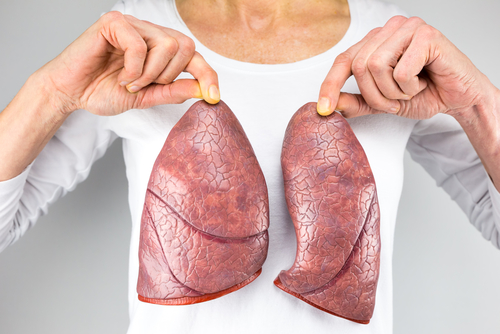Missing Iron Receptor Linked to Poor Prognosis of IPF Patients, Study Suggests

Patients with idiopathic pulmonary fibrosis (IPF) produce a large amount of abnormal airway immune cells lacking an iron receptor that plays an important role in defending the lungs against pollutants and microbes, a study shows.
The missing iron receptor is strongly correlated with poor clinical outcomes for patients, and may in the future become a biomarker of disease progression, as well as a therapeutic target for IPF.
The study, “The Transferrin Receptor CD71 Delineates Functionally Distinct Airway Macrophage Subsets during Idiopathic Pulmonary Fibrosis,” was published in the American Journal of Respiratory and Critical Care Medicine.
IPF is a progressive lung disease of unknown origin characterized by the thickening and stiffening of lung tissue, leading to permanent scarring (fibrosis) that gradually compromises the patients’ respiratory function.
“Treatment options are limited for IPF and existing therapies slow, but do not reverse, disease progression. There is therefore an urgent need to understand the fundamental mechanisms involved in IPF in order to devise new therapeutic approaches,” the investigators wrote.
Previous studies have suggested that airway macrophages (AMs) — a type of immune cell involved in the defense of the lungs’ airways — may be involved in the development of IPF. Moreover, animal models of pulmonary fibrosis have shown significant alterations in iron metabolism, which may also play a role in disease progression.
However, so far, no study has addressed the possible impact of iron receptors responsible for iron uptake in AMs on the development of IPF.
Now, a group of researchers, from the Imperial College London in collaboration with the Royal Brompton Hospital, have shown that IPF patients actually lack AMs that are able to produce these iron receptors, called CD71, compared with healthy individuals.
As a result, these immune cells become unable to metabolize (or process) iron, which gradually accumulates in the patients’ lungs.
In addition, investigators found that unlike normal AMs, those lacking CD71 are more immature, express high amounts of pro-fibrotic genes (genes that promote tissue scarring), and are unable to perform phagocytosis — a process in which a macrophage envelops dead cells or microbes to destroy them.
Importantly, the team also demonstrated that high levels of AMs lacking CD71 were directly associated with poor survival of patients, highlighting the potential use of CD71 as a future biomarker and therapeutic target for IPF.
According to the team, one of the major consequences of lacking CD71 is that IPF patients tend to have a higher number of bacteria in the lungs, and are more prone to infections. This happens for two reasons: first, because AMs lacking CD71 are naturally less capable of fighting bacteria; and second, because bacteria that feed on iron will be able to survive and multiply easily in an environment where iron is present in high levels.
The next steps will include finding ways to restore CD71, so that AMs regain their ability to process iron as well as understanding the real impact of iron on macrophages’ metabolism and immune function.
“Anything we can do to make strides towards new therapies and understanding this disease is extremely important,” Adam Byrne, PhD, Asthma U.K. senior fellow, lecturer in chronic lung disease at Imperial College London and author of the study, said in an Imperial College London press release written by Helen Johnson.







